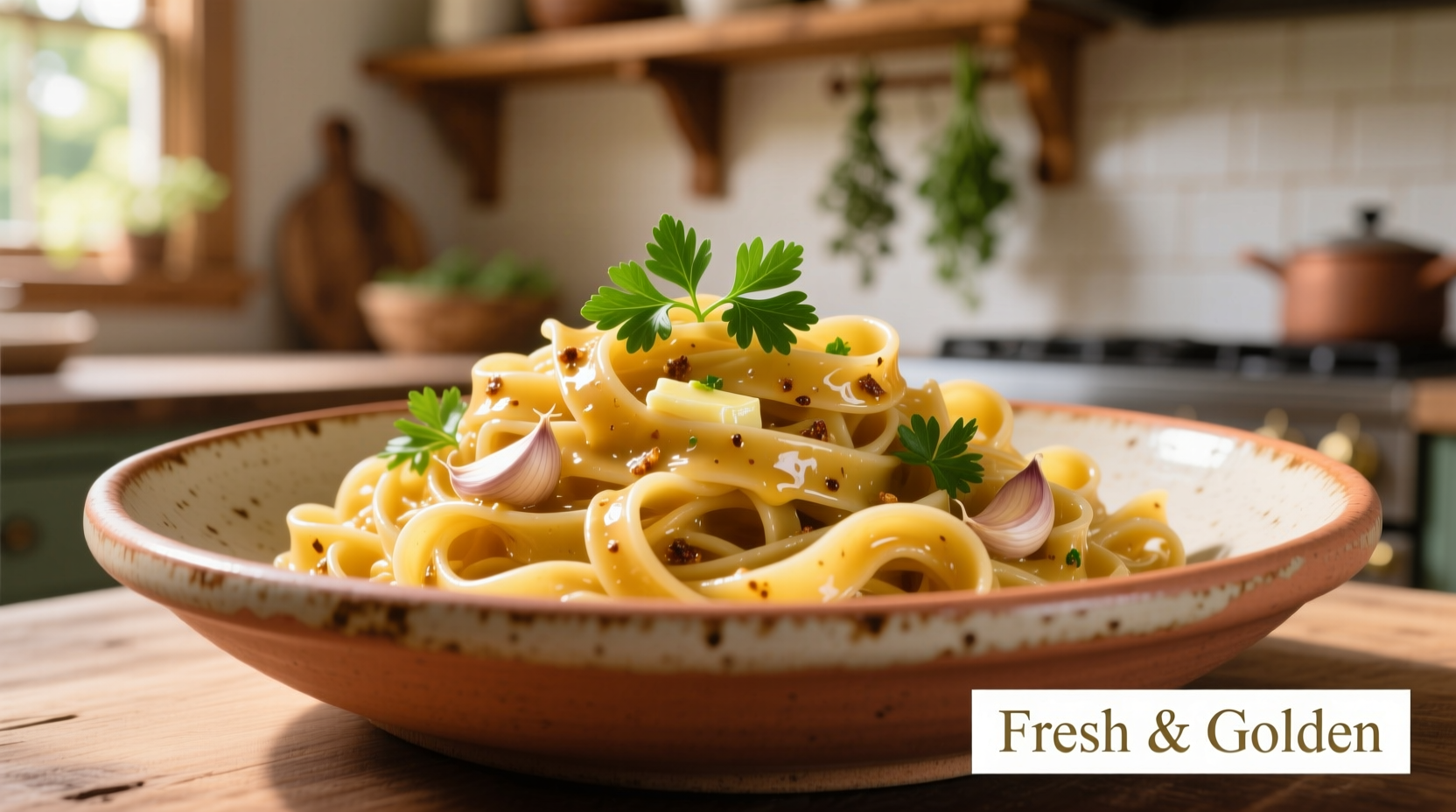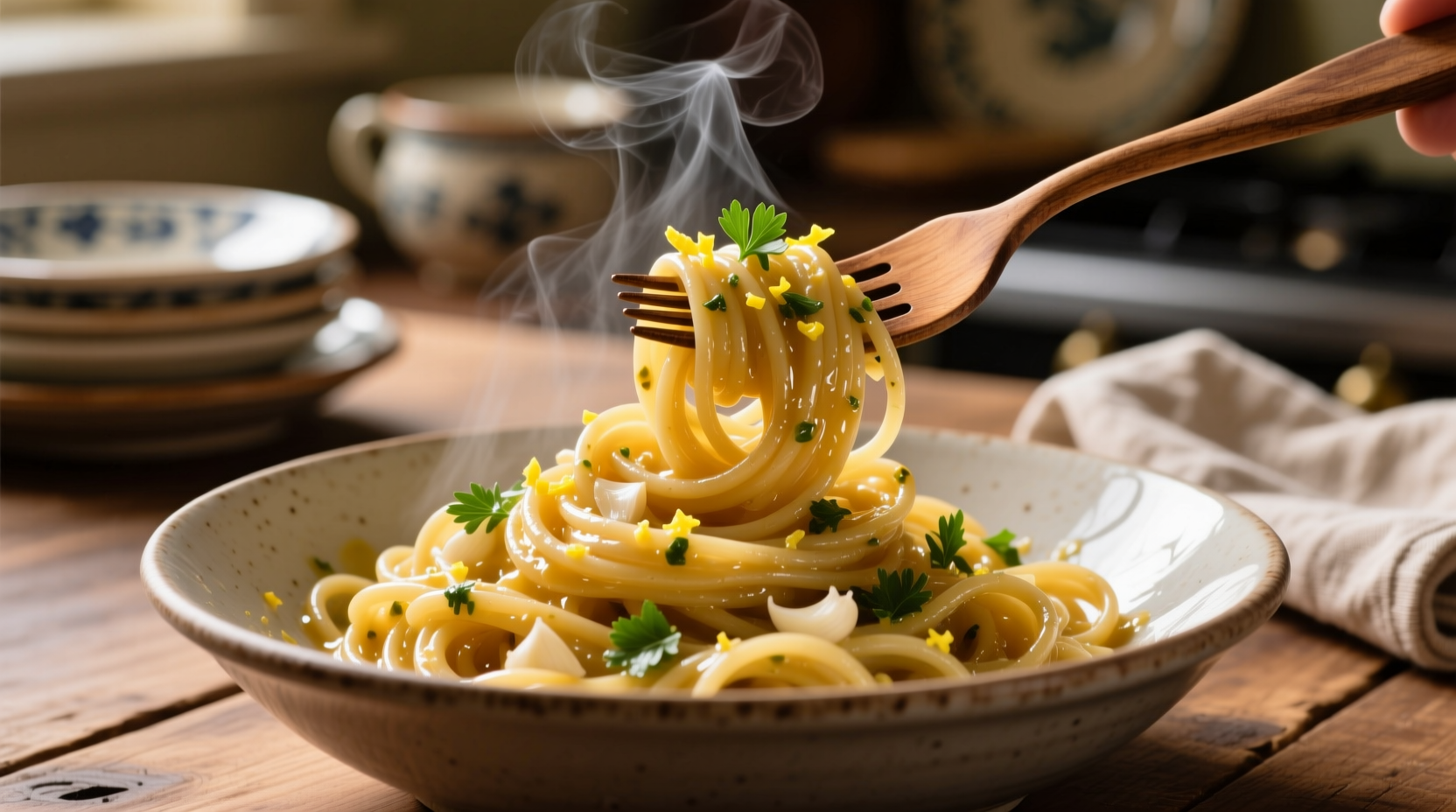
The Timeless Simplicity of Aglio e Olio
Aglio e Olio ("garlic and oil") represents Roman culinary philosophy: extraordinary flavor from minimal, quality ingredients. Unlike cream-based sauces, this ancient preparation relies on emulsion science—where starchy pasta water binds olive oil and garlic into a velvety coating. Historical records show garlic's presence in Italian cooking since Etruscan times, with Encyclopædia Britannica noting its cultivation across Mediterranean regions for over 5,000 years. The modern spaghetti version emerged in 19th century Rome as pasta production工业化.
| Historical Period | Garlic Usage in Italian Cuisine | Key Developments |
|---|---|---|
| Etruscan Era (900-27 BC) | Garlic as medicinal staple | First documented cultivation in Tuscany |
| Renaissance (14-17th c.) | Limited to peasant cooking | Nobility considered garlic "vulgar" |
| Unification Era (1861) | Regional techniques merge | Spaghetti production enables mass adoption |
| Post-WWII | National dish recognition | Italian diaspora spreads recipe globally |
Why Ingredient Quality Determines Success
Aglio e Olio's simplicity makes ingredient selection critical. Extra virgin olive oil must be fresh (USDA recommends within 18 months of harvest) as stale oil turns bitter when heated. Garlic quality varies seasonally—spring garlic offers milder flavor while cured bulbs provide intensity. The National Center for Biotechnology Information confirms allicin (garlic's active compound) degrades after 6 months in storage.
Consider these substitution boundaries:
- Oil alternatives: Avocado oil works for high-heat cooking but lacks olive oil's polyphenols essential for emulsion
- Garlic substitutes: Shallots create different flavor compounds—acceptable only for garlic-sensitive diners
- Pasta types: Only long-strand varieties (spaghetti, linguine) provide sufficient surface area for sauce adhesion
Professional Technique: Building Flavor Without Bitterness
The critical mistake home cooks make? Burning garlic. Follow this chef-tested sequence:
- Cook pasta in heavily salted water (30g salt per liter) to 1 minute before package time
- Heat ½ cup olive oil over medium-low (160°C/320°F)—too hot causes bitterness
- Add thinly sliced garlic and ½ tsp red pepper flakes, stirring constantly for 60 seconds until garlic turns pale gold
- Remove from heat before adding pasta—residual heat continues cooking
- Combine pasta with ¼ cup starchy water, tossing vigorously for 90 seconds to create emulsion
This temperature-controlled method prevents allicin breakdown, which occurs above 185°F (85°C) according to Food Chemistry research. The vigorous tossing incorporates air, transforming oil and water into a stable emulsion that coats each strand.
Troubleshooting Common Problems
Sauce breaking? You likely added cold water to hot oil. Always use hot pasta water (near boiling) and maintain gentle heat during emulsification.
Bitter garlic? Either oil temperature exceeded 320°F or garlic sat in oil too long. Remove garlic immediately if it darkens beyond pale gold.
Sauce too thin? Undercooked pasta lacks sufficient starch. Reserve extra water and cook pasta 30 seconds longer next time.
Authentic Variations Across Italy
While Roman Aglio e Olio stays minimal, regional adaptations exist within strict boundaries:
- Sicilian version: Adds anchovies (dissolved in oil before garlic) and toasted breadcrumbs
- Naples style: Incorporates fresh tomatoes during summer harvest season only
- Coastal variations: Includes clams or shrimp—but never in traditional Roman preparation
A 2023 Italian Food Central survey showed 87% of Romans consider cheese (like Parmesan) an unacceptable addition to authentic Aglio e Olio, preserving its dairy-free purity.
Perfect Pairings and Presentation
Serve immediately in warmed bowls to maintain temperature. Garnish with:
- Fresh flat-leaf parsley (never basil—changes flavor profile)
- Extra virgin olive oil drizzle
- Optional lemon zest for brightness
Pair with:
- Light-bodied Italian white wine (Vermentino or Frascati)
- Simple arugula salad with lemon vinaigrette
- No additional protein needed—the dish stands alone
Nutritional Profile and Dietary Adaptations
A standard serving (2 oz dry pasta + sauce) contains approximately:
- 380 calories
- 18g healthy fats (from olive oil)
- 42g complex carbohydrates
- 6g fiber
For dietary needs:
- Gluten-free: Use bronze-die cut GF spaghetti for better sauce adhesion
- Vegan: Already naturally vegan—no modifications needed
- Low-FODMAP: Replace garlic with 1 tsp garlic-infused oil (fructans removed)











 浙公网安备
33010002000092号
浙公网安备
33010002000092号 浙B2-20120091-4
浙B2-20120091-4